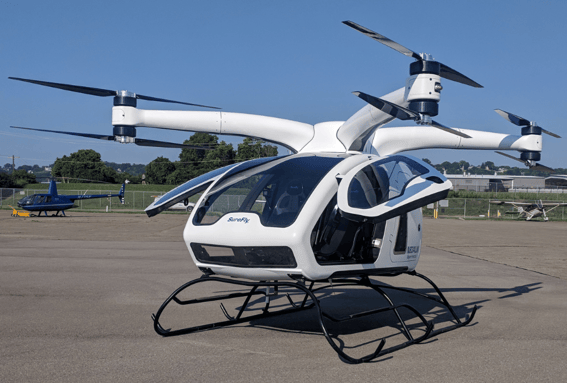Defending Ingenuity: Driving Innovation with Composites in Defense
The rate of change in Defense technology will never be slower than it is today. Evidence shows that the earliest forms of humans used spears for hunting and defense as early as 400,000 BC. Thousands of years later, as humans and technology evolved, so did the way we defend ourselves. Armies grew, weapons became more sophisticated, and new modes of transportation were developed, all of which became key to defending territory and expanding civilization. Fast forward to today – defense is at its peak and using the most advanced technology known to man.
Backed by innovation, the global Defense Industry is rapidly expanding and constantly improving due to the use of technology and new materials. Traditionally, weapons and defense articles have been made from the strongest and most durable materials available, and in most cases, metal was the material of choice. But due to new technology, lighter alternatives are now available. Newly developed composite materials allow for more resilient, durable, lighter-weight weapons systems and vehicles, all of which lead to better performance in the field.
Right now, aerospace engineers are looking for ways to lightweight aircraft without sacrificing performance or durability. Lighter aircraft fly faster and further, which in turn reduces fuel cost and carbon emissions. Composite materials can be the gamechanger those engineers are searching for when attempting to increase the range and improve performance of aircraft, ground vehicles, and UAVs. Capable of replacing heavy legacy metal parts with similar strength properties at a fraction of the weight, composites are becoming increasingly relevant in the defense industry. Reducing the weight of even the smallest components, many of which are used on a large scale, can drastically decrease the amount of fuel or battery power required to perform a mission. Plus, composite parts don’t require long lead times, can be manufactured quicker than metals, and have a less complicated supply chain. Composites can also be used to replace the heavy materials on weapons and other equipment carried by soldiers. The weight of the equipment a soldier carries can have a direct impact on the soldier’s performance in combat. Lightweighting a soldier's gear increases mobility and endurance, and improves cognition and shooting response time, creating a sharper soldier.

Not only does the use of composites drive innovation in the Defense Industry, but also creates more sustainable environmentally friendly equipment that, in many cases, performs better and lasts longer than the original equipment. The unique properties of composites make the materials more corrosion resistant, keeping parts stronger for longer periods of time. Increasing the lifecycle of equipment saves money and time. Additionally, the resistance to twisting, warping, and fatigue in harsh thermal gradient environments makes composite materials an excellent alternative to aluminum.
The compounding effects of the COVID-19 pandemic and the Russian invasion of Ukraine continue to have a significant negative impact on global supply chains. Continuing to produce metal parts in high quantities comes at a substantial financial cost with long lead times, which slows production of vehicles, weapons, and gear. This challenge is particularly acute in the U.S. Defense Industry. However, composites represent a ready alternative to metals. By injection molding with composite materials, manufacturers can produce thousands of parts each day, shortening lead times and simplifying the supply chain. At the same time, Defense manufacturers can go from two-dimensional drawings to finished parts in a fraction of the time it takes for metals to go through the design and manufacturing process for larger quantities.

Composite materials represent a key opportunity to save time and money while also improving the performance and lifecycle of valuable assets critical to national defense. One such material, HX5®, is a nanocomposite from Alpine Advanced Materials that was specifically engineered to replace 6061-T6 aluminum. With similar strength but only half the weight, its unique properties include a low coefficient of thermal expansion, a wide operating temperature range, and resistance to solvents, fuels, and lubricants. Plus, Alpine’s simplified supply chain reduces lead times while cutting production and labor costs.
The Aerospace and Defense market is expected to grow by almost $300 billion by 2026. Such rapid expansion demands innovation, and aircraft, aerospace components, weapons systems, and other military equipment must evolve to meet the security challenges of the 21st Century. Reducing lead times and securing the supply chain by using advanced composite materials will help secure the future of the Aerospace & Defense Industry by enabling rapid innovation and making the equipment of tomorrow lighter, more durable, and more effective.






